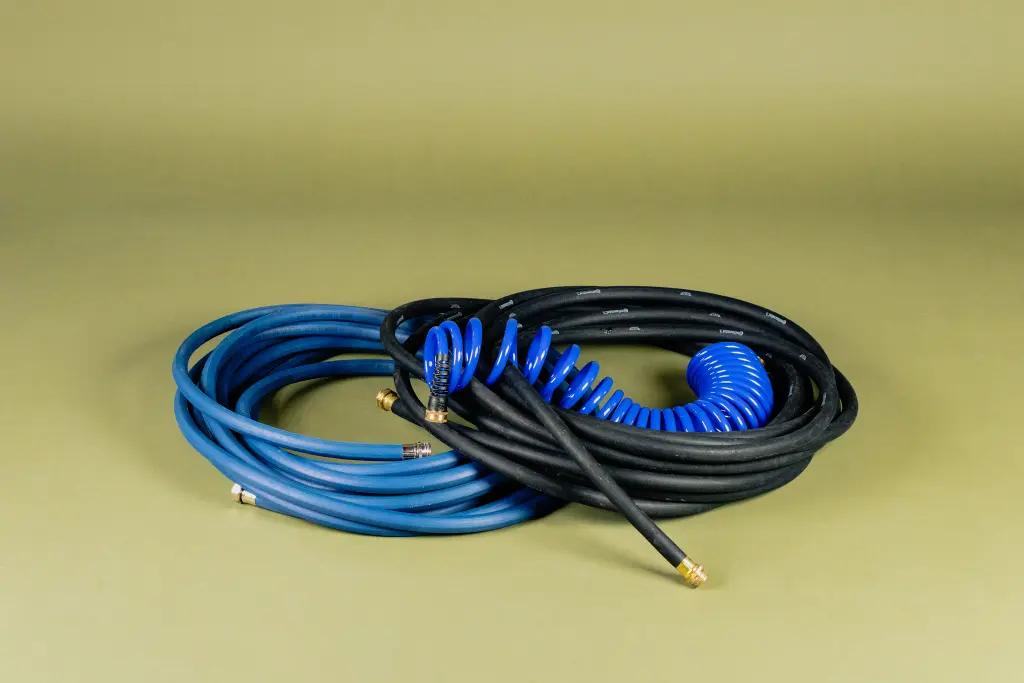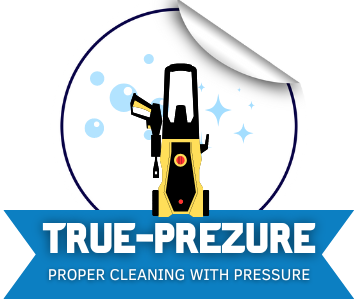Are you tired of dragging out the hose and spending hours washing your car? What if we told you there was a way to clean your car without using any water at all?
That’s right, with a waterless or rinseless wash, you can get your vehicle looking sparkling clean in no time.
In this expert guide on how to wash a car without a hose, we will take you through every step of the process so that even beginners can achieve professional-level results. So let’s dive in and see how easy it is to give your car a thorough cleaning without ever touching a garden hose!
When You Don’t Have A Hose
When you can’t access a hose for car washing, don’t worry; there are alternative methods available. One option is using a bucket of soapy water and a microfiber towel. Fill the bucket, dip the towel, wring out excess water, and gently wipe down your car’s exterior. This method is great for spot-cleaning, though it can be time-consuming for a thorough job.How to Adjust Pressure on a Pressure Washer?

Another popular choice is using waterless wash products in spray form. These products contain special chemicals that encapsulate dirt particles for easy removal without harming your car’s paint. Simply spray on, wait for about 30 seconds, and wipe clean with a microfiber cloth.
No matter your method, remember to take care not to scratch or damage your car’s finish during the cleaning process by using gentle motions and avoiding harsh materials like sponges or rough towels.
For more details on waterless car washing techniques, you can explore Consumer Reports’ guide. They provide valuable insights into waterless car cleaning methods to maintain your vehicle’s appearance without the need for a hose.
Waterless wash And Rinseless Wash
Waterless wash and rinseless wash are two popular alternatives to traditional car washing methods, especially when you don’t have access to a hose.
Waterless wash involves using a special solution that can clean your car without the need for water.
Rinseless wash uses a small amount of water mixed with a specialized cleaning solution.
Both methods are ideal for people who live in areas where water is scarce or during drought seasons. They also save time as they require fewer steps compared to conventional washing methods. With these techniques, you can achieve great results while being environmentally friendly by saving water.
It’s important to note that both methods should be used on cars with light dirt and dust only. For heavily soiled vehicles or those with mud and grime buildup, it’s best to opt for traditional washing methods instead.
Incorporating these alternative techniques into your car-cleaning regimen can help you save time and resources while still maintaining your vehicle’s appearance.
For more detailed information on waterless and rinseless car washing, you can explore . They provide valuable insights into these eco-friendly car cleaning methods.
.
How To Do A Rinseless Wash
A rinseless wash is a great option for those times when you don’t have access to a hose or water source. This method uses a special solution that allows you to clean your car without the need for rinsing.
Preparation
Before you embark on the task of washing your car without a hose, it’s crucial to meticulously prepare and keep everything well-organized. This proactive approach will guarantee that the process proceeds as effortlessly as possible.

The first step is to choose a suitable location for the wash. Ideally, this should be in a shaded area away from direct sunlight, which can cause water spots on the paintwork. You may also want to lay down some towels or mats to protect the ground from any runoff.
Next, gather all of your materials together. This includes your waterless or rinseless wash solution, microfiber towels or mitts for washing and drying, and any protective products such as wax or sealant.
It’s important to read and follow the instructions carefully when using these products. Improper use can damage your vehicle’s paintwork or leave streaks and smudges.
Give your car a quick once-over before starting the wash. Remove any loose dirt or debris with a soft brush or blower so that it doesn’t scratch the paint during washing.
By taking these steps to prepare properly beforehand, you’ll be able to achieve great results when washing your car without a hose!
Washing
Washing your car without a hose might appear to be a daunting undertaking, but armed with the appropriate tools and methods, you can achieve it swiftly and with utmost efficiency. The initial step in this process is to assemble all essential supplies. These must-haves encompass waterless or rinseless wash solution, microfiber towels or mitts, detailing spray for enhanced lubrication, and buckets designated for soiled towels.
Before you begin washing your car, make sure it is parked in a shaded area to avoid water spots from drying too quickly. It’s also important to start at the top of the vehicle and work your way down to prevent dirt and debris from splashing onto areas that have already been cleaned.
When applying the wash solution, be sure to use enough product so that there is ample lubrication between the towel/mitt and the surface of your car. Avoid using excessive pressure as this could cause scratches on delicate paint finishes.
Ryobi Vs Greenworks Pressure Washer winner in 2023
Once you’ve finished cleaning each section of your car with the wash solution, move on to drying it off thoroughly with clean microfiber towels or chamois cloths. Be sure not to miss any hard-to-reach areas such as door jambs and around emblems.
By following these simple steps for washing your car without a hose, you’ll be able to keep it looking clean and shiny even when access to running water isn’t available.
Drying The Vehicle
Drying your vehicle after washing it is just as essential as the washing process itself. Leaving water droplets on your car’s surface can cause unsightly watermarks, and if left for too long, they could even damage the paintwork.
Effectively drying your vehicle without a hose requires the use of a dedicated microfiber towel or chamois designed specifically for this purpose. Utilizing any random towel or cloth may result in unsightly scratches and swirl marks.
Commence by employing one portion of the towel to gently blot away any visible water droplets on the car’s surface. Subsequently, use a fresh section of the towel to meticulously wipe down each panel. It’s crucial to maintain a swift and efficient pace to prevent the formation of unwanted water spots.
If you have used a rinseless wash product, then you may not need to dry your car at all since most products are formulated with special polymers that create a hydrophobic barrier against dirt and moisture.
However, if you do choose to dry your vehicle manually after washing it without a hose, be sure never to drag or pull across its surface when wiping down panels; instead blotting motions work best in this regard.
Applying Protection
Applying protection to your car after washing it without a hose is an important step in maintaining its shine and preventing damage from environmental factors. There are two main types of protection products: sealants and waxes.
Sealants provide long-lasting protection against UV rays, water spots, and other contaminants. They typically last six months or more and require less frequent reapplication than wax. However, they don’t offer as much depth of shine as wax.
Wax provides a deeper, richer shine than sealant but requires more frequent application, usually every three months or so. It also offers additional benefits such as filling in small scratches and swirl marks.How Much Water Does a Pressure Washer Use -Full Guiding
To apply either product, start by ensuring your vehicle’s surface is completely dry. Then use a foam applicator pad to apply the product evenly over one section at a time using circular motions. Let it sit for a few minutes before buffing off any excess with a microfiber towel.
Remember to read the instructions carefully before applying any protective product to ensure you get the best results possible.
Tips For Best Result
To achieve the best results when washing your car without a hose, it’s essential to follow some careful steps and pay attention to details. Here are some tips to help you achieve that perfect finish:
Choose Quality Products:
- Select high-quality waterless or rinseless wash solutions and follow the manufacturer’s instructions precisely. Using inferior products can lead to scratches or swirl marks on your car’s paint.
Work from Top to Bottom:
- Always start cleaning from the top and work your way down. This prevents dirt or debris from upper panels from falling onto freshly cleaned areas.Can you use 2000 PSI Pressure Washer on Car?
Use Multiple Microfiber Towels:
- Employ multiple microfiber towels to avoid transferring grime from one panel to another. Dirty towels can undo your hard work.
Avoid Excessive Pressure:
- Be cautious not to apply too much pressure when wiping down each panel, as this may cause scratches. Let the towel do the work by using a gentle back-and-forth motion.
Ensure Panels Are Dry:
- Before applying any protective products like wax or sealant, make sure each panel is completely dry. Proper drying ensures these products adhere correctly and provide lasting protection against environmental factors.
Properly Store Your Towels:
- After use, store your microfiber towels separately from other laundry items, and avoid adding fabric softeners. This ensures they stay in good condition and are ready for the next car-cleaning session.
For more detailed guidance on car detailing and cleaning techniques, you can explore AutoGeek. They offer comprehensive information and product recommendations to help you maintain your vehicle’s appearance.
FAQ
Do I need a wash mitt?
To achieve the best results when washing your car without a hose, a wash mitt is essential. These mitts are designed to effectively remove dirt and grime while being gentle on your car’s paint. They allow you to apply pressure where needed while maintaining control over the force you exert.
When selecting a wash mitt, opt for high-quality materials like microfiber or lambswool. These materials are soft and absorbent, making them ideal for cleaning your vehicle without causing any harm.
Using just any old cloth or rag won’t suffice, as they can actually do more harm than good by leaving behind scratches and swirl marks on your car’s surface.
In summary, if you want your car looking its best after a hoseless wash, invest in a quality wash mitt for the best results.
How long does it take to wash your car by hand?
When washing a car by hand without a hose, the time it takes can vary significantly based on several factors. The size of your vehicle, your experience level, the presence of dirt or grime buildup, and the products you use all play a role. In general, expect a range of 30 minutes to an hour per wash session, depending on these variables and your efficiency with the process.
Conclusion
Washing your car without a hose is not only possible but also easy and fun. Whether you opt for a waterless wash or a rinseless one, following the steps outlined in this guide will help you achieve excellent results.
Remember to always use high-quality products that are safe for your vehicle’s paintwork and follow best practices such as using separate buckets, washing from top to bottom, and drying properly.
In addition to helping preserve the appearance of your car, washing it by hand is also an opportunity to bond with it while getting some exercise. So grab your bucket and mitts, put on some music or a podcast, and enjoy giving your ride the TLC it deserves!

